Search
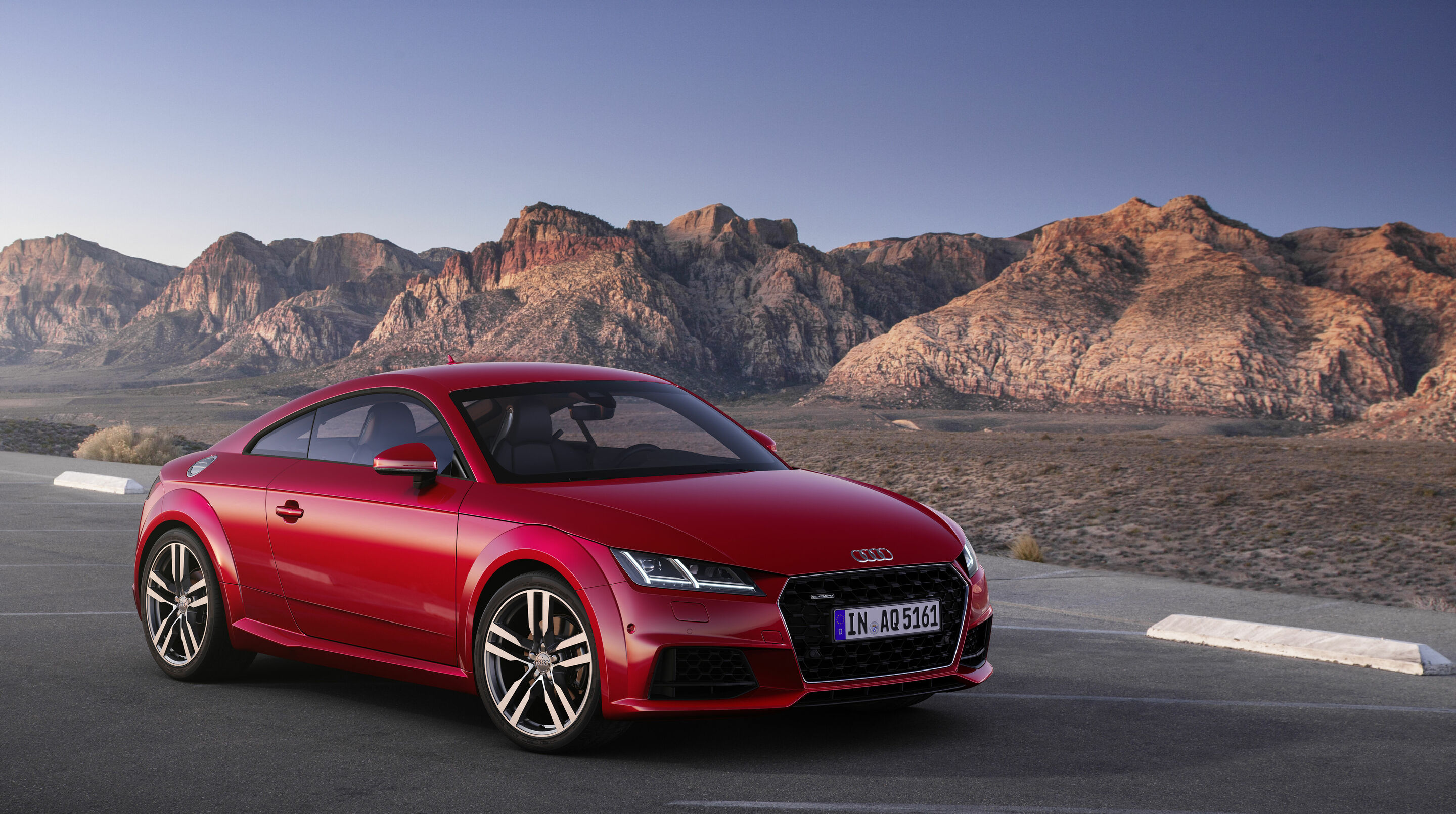
Successful for decades: 662,762 units across three generations built over 25 years Design inspired by Bauhaus: every shape has a clear function Vorsprung durch Technik: New technologies launched with the TT, including Audi magnetic ride, Audi virtual cockpit, and OLED technology
A quarter of a century of TT history: When Audi presented the concept car at the IAA in 1995, public opinion became clear right away: “This car should be mass-produced – exactly as it is!” With the series debut in 1998, the Audi TT wrote design history and was built across three generations as a Coupé and Roadster.
With a vision of “a car for enthusiasts,” Audi presented the Audi TT Coupé as a sports car concept at the IAA in Frankfurt in the fall of 1995. Shortly afterward, the decision was made to mass-produce it. Torsten Wenzel, the exterior designer at Audi who helped introduce the study to series production, recalls: “To us, the greatest praise was when the trade press noted appreciatively that not much had changed from the concept to production model, although we did, of course, have to adapt many details due to the technical specifications for the production version, including the proportions.” Most noticeable was the integration of a rear side window, which elongated the car’s profile and increased the sports car’s dynamics. For Wenzel, the TT remains “a driving sculpture, with highest-quality surfaces and lines.” The body of the Audi TT appears to be made from one piece, Wenzel says, and the front end without traditional bumper overhangs emphasizes its distinctive shape. Another design element contributes to the unmistakable silhouette of the Audi TT Coupé: the circle – “the perfect graphic shape,” as Wenzel describes it. Numerous circular elements inspired the sports car’s exterior and interior design. Inspired by Bauhaus, every line in the Audi TT has a purpose, every shape a function. “At Audi Design, we always follow the philosophy of ‘less is more.’
 After “Windschnittig” comes “Form vollendet”: A new special exhibition at the Audi museum mobile
After “Windschnittig” comes “Form vollendet”: A new special exhibition at the Audi museum mobile
Aerodynamics in automotive manufacturing from 1945 to the present day: from concept cars and record-breaking models to race cars and the Cd world champion, the Audi 100 Almost 30 exhibits feature in a special exhibition from July 25, 2024, to March 2, 2025
Audi wrote engineering history in 1982 with the Audi 100. With its drag coefficient of 0.30, the third-generation Audi 100 was the world’s most aerodynamically efficient production saloon at the time, making it an essential part of the new special exhibition "Form vollendet". The new special exhibition will be at the Audi museum mobile in Ingolstadt until March 2, 2025, where Audi Tradition will present aerodynamic concepts from 1945 to the present day.
The aerodynamics research that flourished before the Second World War and which was the subject of Audi Tradition’s “Windschnittig” exhibition (German for “streamlined”) that ran until the end of June received little attention after 1945. Europe’s automotive industry was busy getting back on its feet. During this period, pre-war developments were still in use and improved upon. It wasn’t until the rising cost of fuel during the 1973 oil crisis prompted a shift in thinking that automotive engineers began focusing on reducing fuel consumption. One of the dials used to achieve this was aerodynamic drag. In 1982, Audi made a splash with the Audi 100; its drag coefficient of 0.30 set a world record for production sedans, a value that would become the benchmark for years to come. The new Audi Tradition special exhibition “Form vollendet” (German for “form perfected”) showcases the Cd world champion Audi 100 alongside other models such as the NSU Ro 80, the Porsche 356, the Lamborghini Countach, and the Ducati Paso 950.
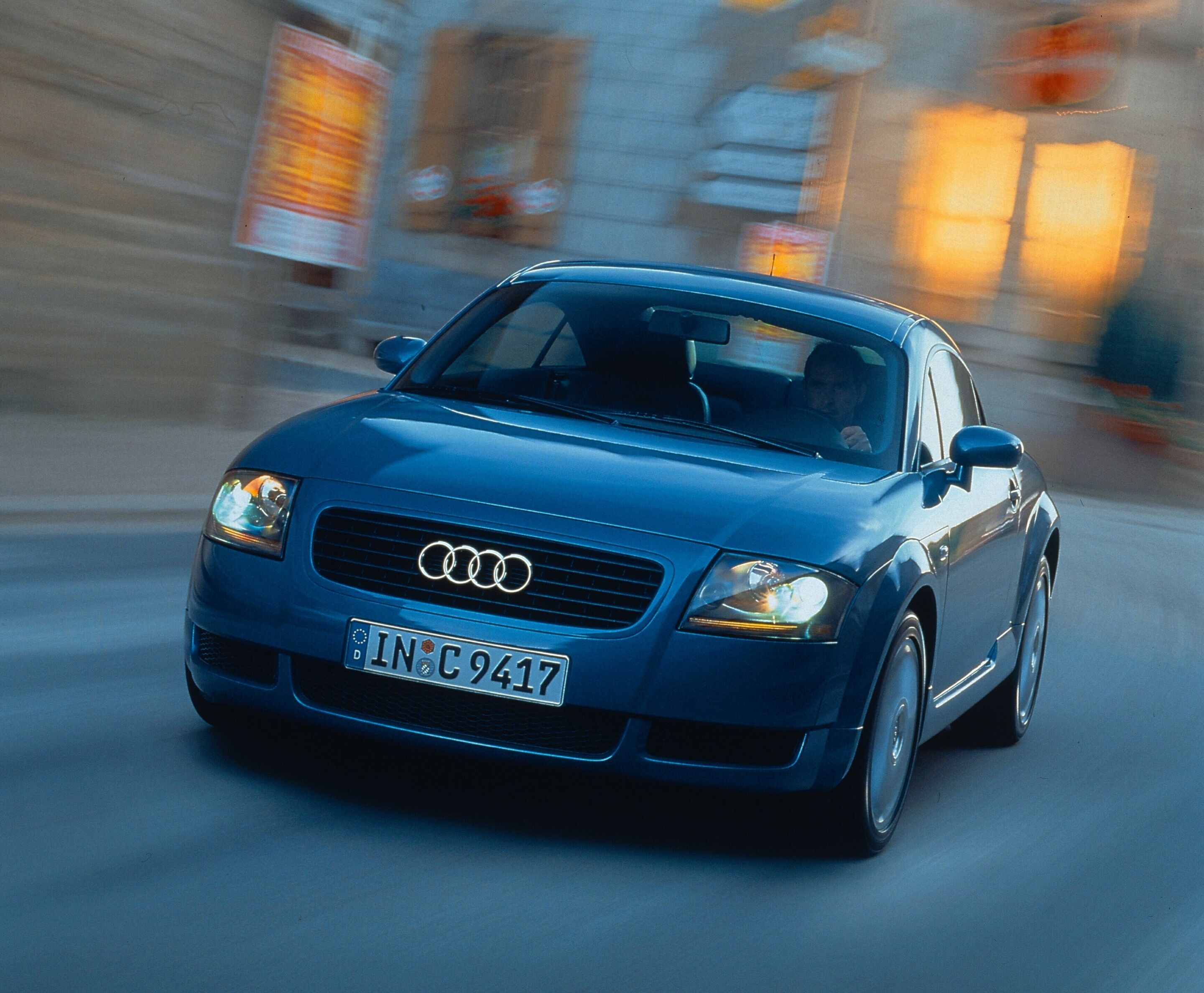 A timeless design icon: The Audi TT turns 25
A timeless design icon: The Audi TT turns 25
Inspired by Bauhaus: Coupé study from 1995 began series production in 1998 178,765 first-generation Audi TT Coupés had rolled off the production line by 2006 Audi designer Torsten Wenzel introduced the study to series production: “The Audi TT is a driving sculpture”
Twenty-five years, three generations: The brand with the four rings wrote design history with the Audi TT. Since its debut in 1998, the sports car has struck a chord with people worldwide thanks to the fun it promises drivers and its clear design language. „Auto Europe“ voted it the best new car of the year in 1999.
In the mid-1990s, the Audi A8 luxury model elevated the Audi brand to a higher position and gradually led to the renaming of the model series: The Audi 80 became the Audi A4, and the Audi 100 was dubbed the Audi A6. Introduced in 1994, the Audi A4 was the first model to embody Audi’s new design language. Next was the Audi A3 premium compact car, launched in 1996, and the second generation of the Audi A6, introduced in 1997. In the course of emotionalizing the brand through a fresh, progressive design, American designer Freeman Thomas, under the then Head of Design Peter Schreyer, created a puristic sports car in the Audi TT Coupé. Audi presented the study to an enthusiastic trade show audience at the IAA in Frankfurt in September 1995. The model name “TT” is reminiscent of the legendary Tourist Trophy on the Isle of Man, one of the oldest motorsports events in the world and one where NSU and DKW celebrated great successes with their motorcycles. The name “TT” also recalls the sporty NSU TT of the 1960s. The Audi TT Coupé’s deliberate departure from the usual Audi nomenclature underscored the complete novelty of the model. Designer Wenzel: “In the Audi TT, every shape has a clear function” In December 1995, the decision was made to mass-produce the Audi TT Coupé.
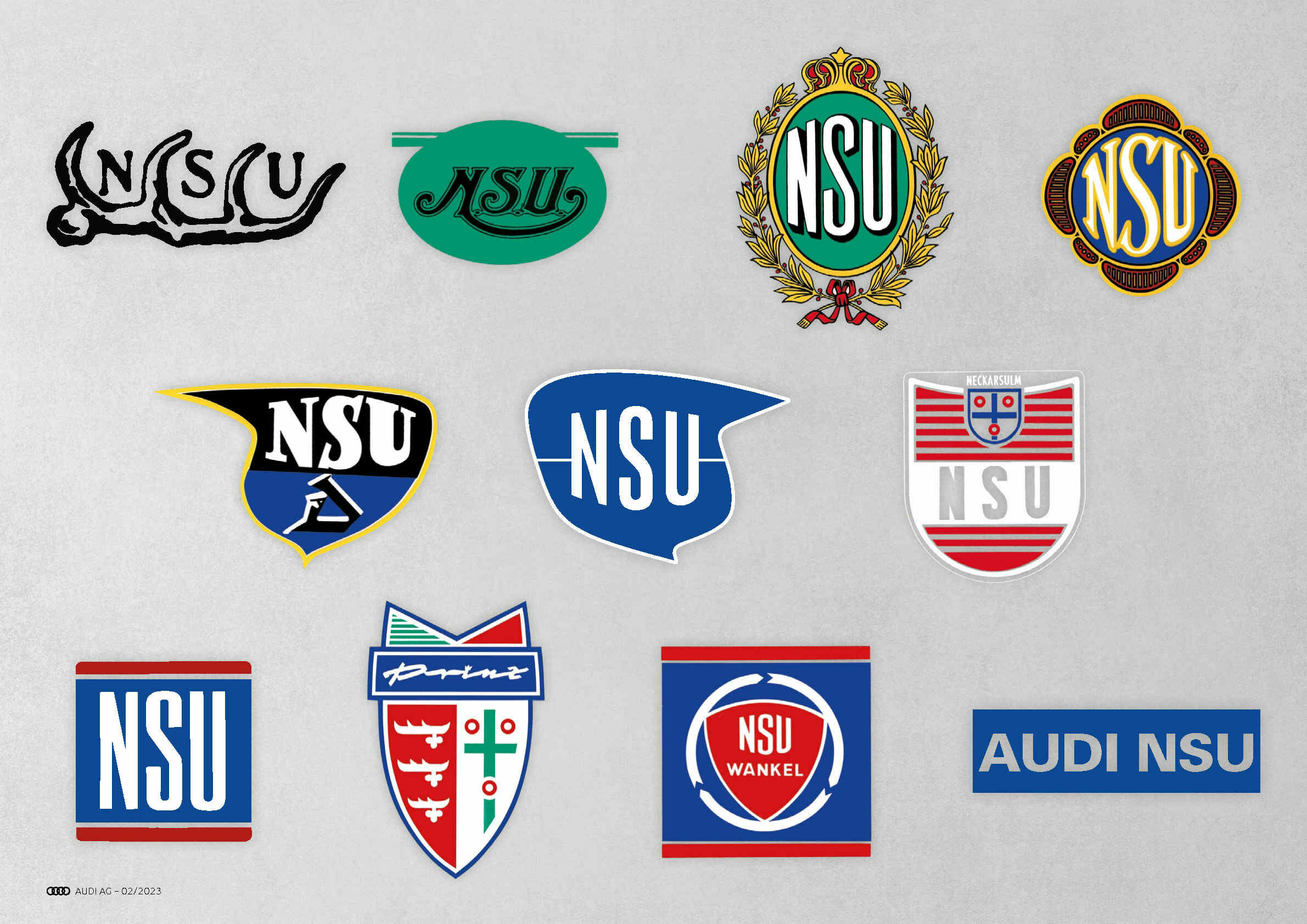 The traditional NSU brand and the Audi Neckarsulm site: 150 years of innovation and transformation
The traditional NSU brand and the Audi Neckarsulm site: 150 years of innovation and transformation
In the anniversary year of 2023, Audi Tradition will bring out a number of NSU highlights from AUDI AG’s historical vehicle collection for events. Ten-part series with classic and exotic cars from NSU’s product history
The traditional NSU brand is celebrating its birthday. In 1873, Christian Schmidt and Heinrich Stoll founded “Mechanische Werkstätte Schmidt & Stoll” in Riedlingen for the production of knitting machines, which later evolved into NSU Motorenwerke AG and ultimately into today’s Audi site in Neckarsulm. Even NSU’s name is closely associated with Neckarsulm, as the company name is derived from the city on the Neckar and Sulm rivers. NSU impressively demonstrates the development of mobility – from bicycles and motorcycles to automobiles. For its 150th anniversary, Audi Tradition is bringing out a number of NSU highlights from its historical vehicle collection. The special exhibition “Innovation, audacity and transformation”, a cooperation project between Audi Tradition and the German Bicycle and NSU Museum (Deutsches Zweirad- und NSU-Museum), is also under construction. The exhibition will be on display at the Audi Forum in Neckarsulm and at the German Bicycle and NSU Museum in Neckarsulm starting on June 14.
“There are so many stories to tell from the long history of NSU,” said Tobias Fräbel, an employee at Audi Tradition responsible for the corporate archives of the Neckarsulm site and the NSU brand. “Since we can’t tell all the stories in just one text, Audi Tradition will offer stories and background information about the company, its products, its involvement in racing and much more throughout the year.” These posts can be found on Audi Tradition’s Instagram channel and in the Audi MediaCenter. There, Audi Tradition will launch a ten-part series. From March to December, one NSU model will be introduced every month – from the brand’s classics, whether they have two or four wheels, to prototypes and exotic models.
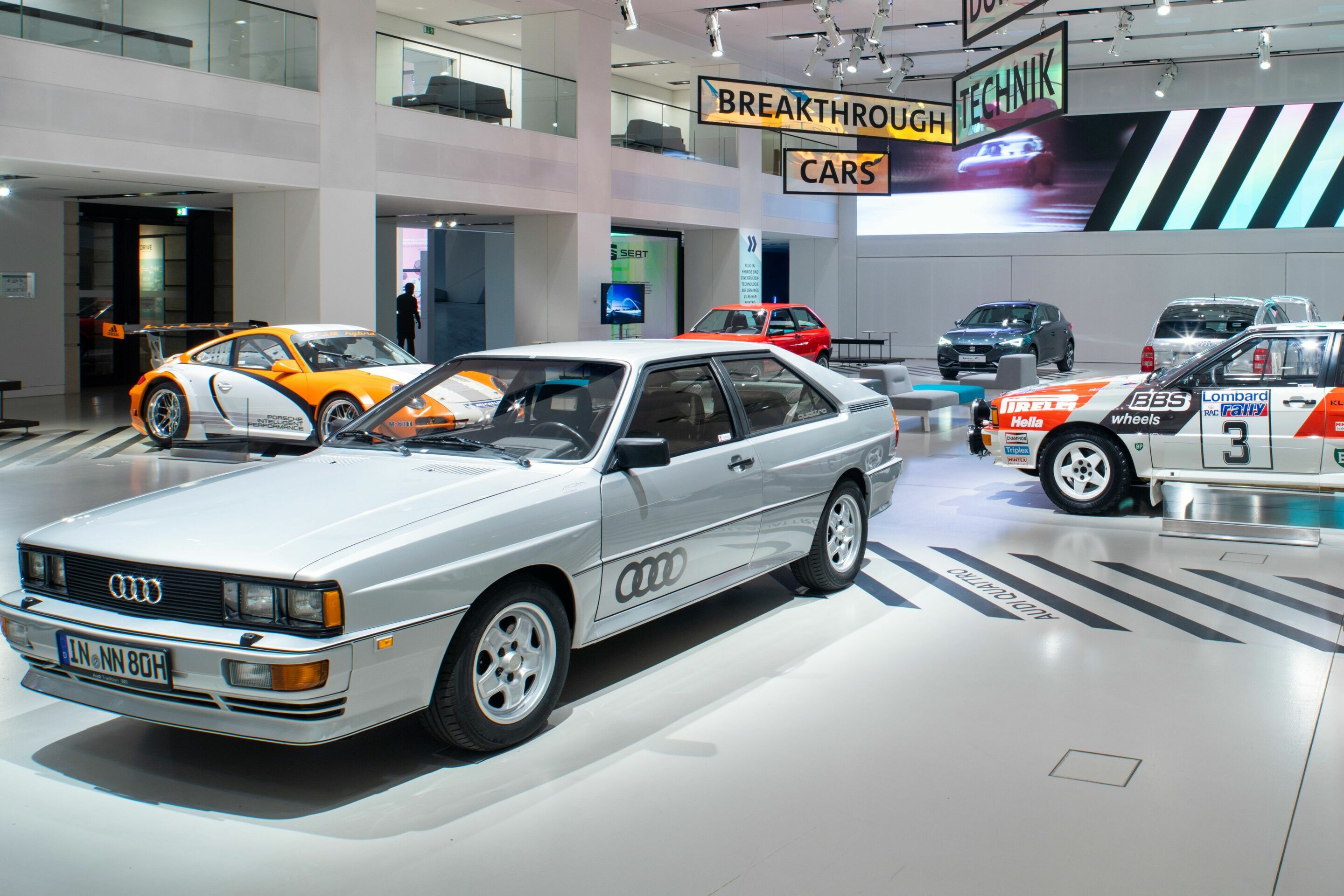 Audi Tradition shows legendary cars in Berlin
Audi Tradition shows legendary cars in Berlin
Volkswagen Group Forum” with exclusive selection of automotive game changers from the Group’s brands until end of 2022 Audi Tradition also present on Kurfürstendamm in Audi City in Berlin on June 18 and 19 – motto at Classic Days Berlin: “The Golden Twenties”
“AHEAD – Stories of Transformation” – this is the name of the current exhibition at Volkswagen Group’s representative office in Berlin. In it, the Group stages its transformation as a journey through the model history of its brands, spinning out the story to today, with the automotive industry undergoing its greatest transformation to date. Audi Tradition is chipping in three legendary cars, a cutaway model, and a wealth of information to the show, thus putting “Vorsprung durch Technik” on display in Germany’s capital – for example, the lightweight design of the Audi A2 or the engineering expertise that inspired the legendary Audi quattro; the rally version of the latter is also on display in Berlin. 120,000 visitors have already seen the exhibition at the Group’s representative office at Friedrichstrasse 84, Berlin. It is still open daily from 10 AM to 7 PM until the end of 2022; admission is free.
The current exhibition shows that the will to change and the courage to renew have always been central components of the DNA of the Volkswagen Group and its brands. Before their visit, interested exhibition-goers can get inspired and get a first impression online at https://drive-volkswagen-group.com/en/exhibition/. A virtual tour is also available online at https://drive-volkswagen-group.com/ausstellung/#virtualtour. “The Golden Twenties”: A hundred years of Vorsprung at Classic Days Berlin Classic Days Berlin brings car history to life: On the weekend of June 18 and 19, Audi Tradition will present gems from AUDI AG’s historic vehicle collection in and in front of Audi City in Berlin on Kurfürstendamm.
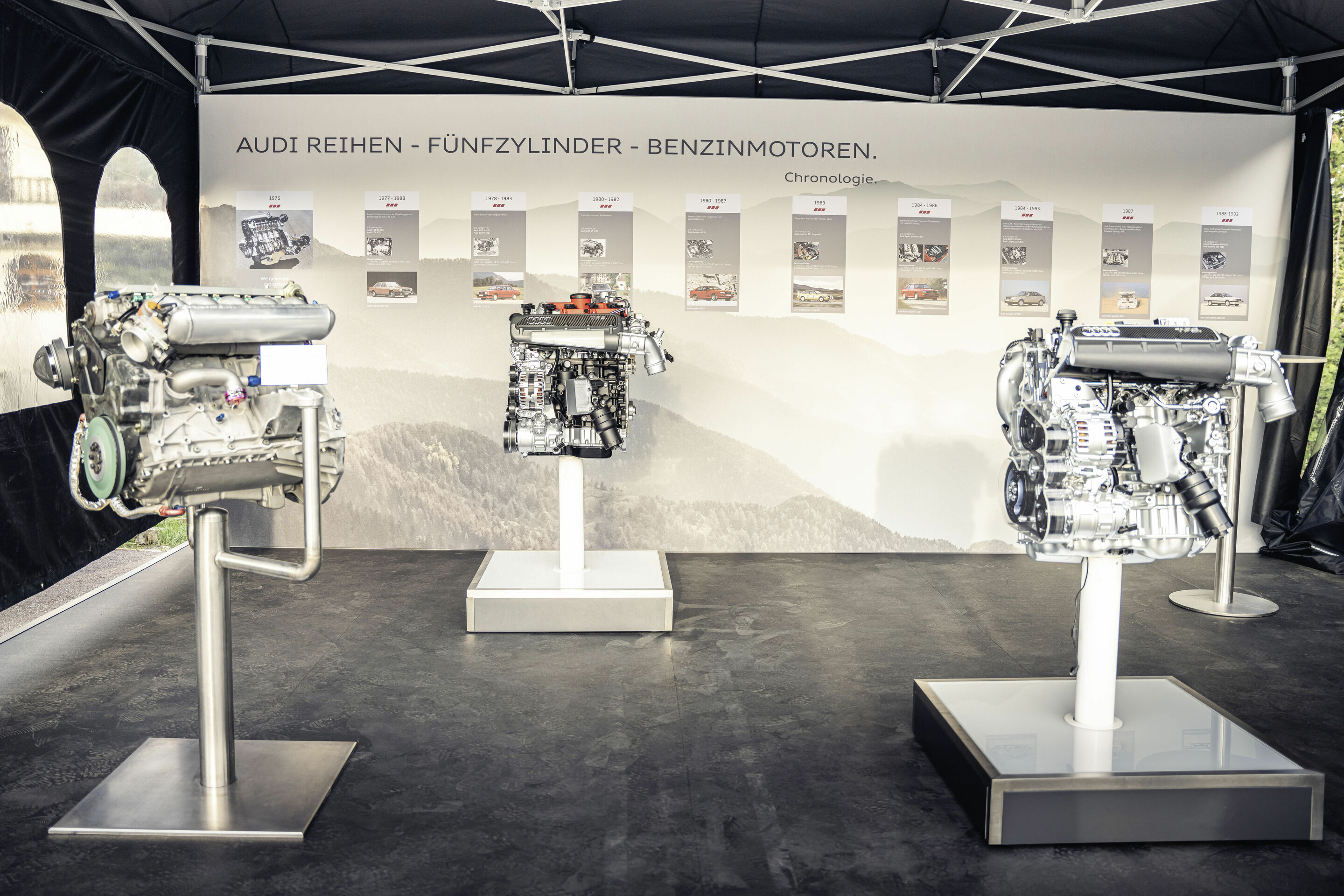 Powerhouses: five-cylinder engines at Audi
Powerhouses: five-cylinder engines at Audi
Five-cylinder engine delivering 136 hp presented for the first time in 1976 in the Audi 100 Successful engine concept for series production and rallying Audi RS 3: modified five-cylinder engine with more torque
Audi presented the first five-cylinder gasoline engine 45 years ago in the second-generation Audi 100. Enhancements and new developments followed with turbocharging, exhaust gas purification and four-valve technology, rally engines, and five-cylinder diesel units. The 2.5 TFSI won the “International Engine of the Year” award nine times in a row. Today, the high-performance engine in the new Audi RS 3 Sportback carries on the five-cylinder engine tradition – with more power than ever.
The five-cylinder engines from Audi have achieved cult status – partly due to their successful deployment in motorsport and also on account of their reliability and economy. The engine’s unique 1-2-4-5-3 ignition sequence and the incomparable sound that comes with it make the driving experience so exhilarating. The first five-cylinder gasoline engine powered the Audi 100 (C2) in 1976.
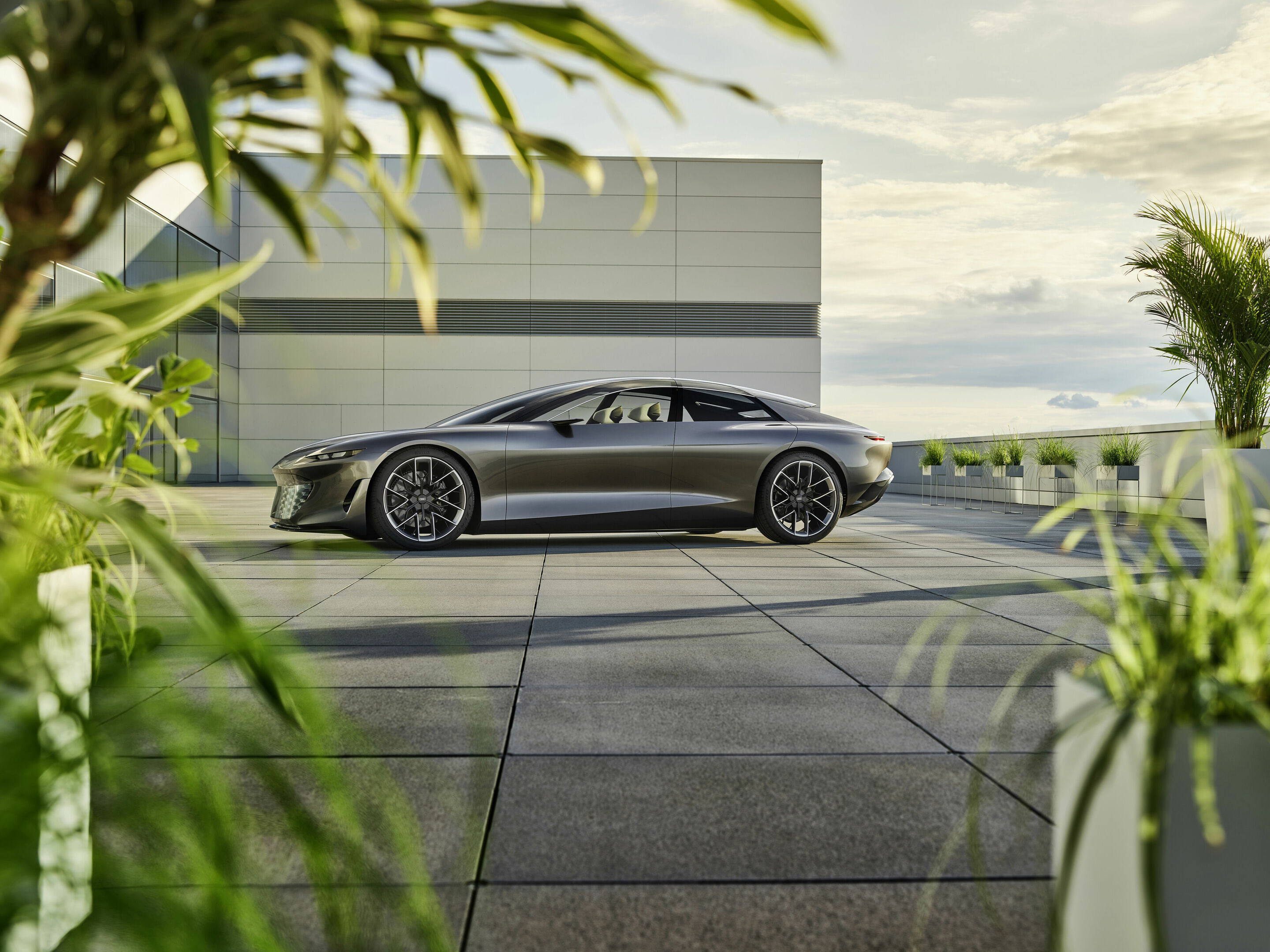 First class toward the future
First class toward the future
Audi grandsphere concept – luxury sedan with an electric drive system New interior concept: free space in the front row Automated driving creates an innovative experience sphere
The private jet for the road – At the IAA 2021, Audi is presenting the Audi grandsphere concept study. Like a first class flight, the 5.35 m (17.6 ft.) long grandsphere sedan combines the luxury of private travel in the greatest of comfort with a comprehensive onboard experience offering. Level 4 automated driving makes new dimensions of freedom possible: in this mode, the interior turns into a spacious sphere of experience without a steering wheel, pedals, or displays. And the front seats become a first class lounge with maximum space, freer views, and access to all the functions of a holistic digital ecosystem that the Audi grandsphere is integrated into.
As the second of three “sphere” concept cars from the brand with the four rings, the Audi grandsphere has a special place. That is because the technologies and design features assembled in it will turn up again within a few years in future Audi series. The Audi grandsphere concept illustrates the brand’s claim that it is becoming the trendsetter at the top of the automotive industry for technological transformation and completely new, holistic mobility offerings. The electrically driven roadster Audi skysphere concept debuted in August 2021 – it was a spectacular vision of an automatically driving GT that transforms into a self-driving sports car with a variable wheelbase. These two concept cars – as well as the Audi urbansphere, which will appear as the third part of the trio in 2022 – are linked by their overall concept, which is derived from their ability to drive automatically at level 4. Audi is working with CARIAD, the Volkswagen Group’s software think tank, toward introducing that technology in the second half of the decade.
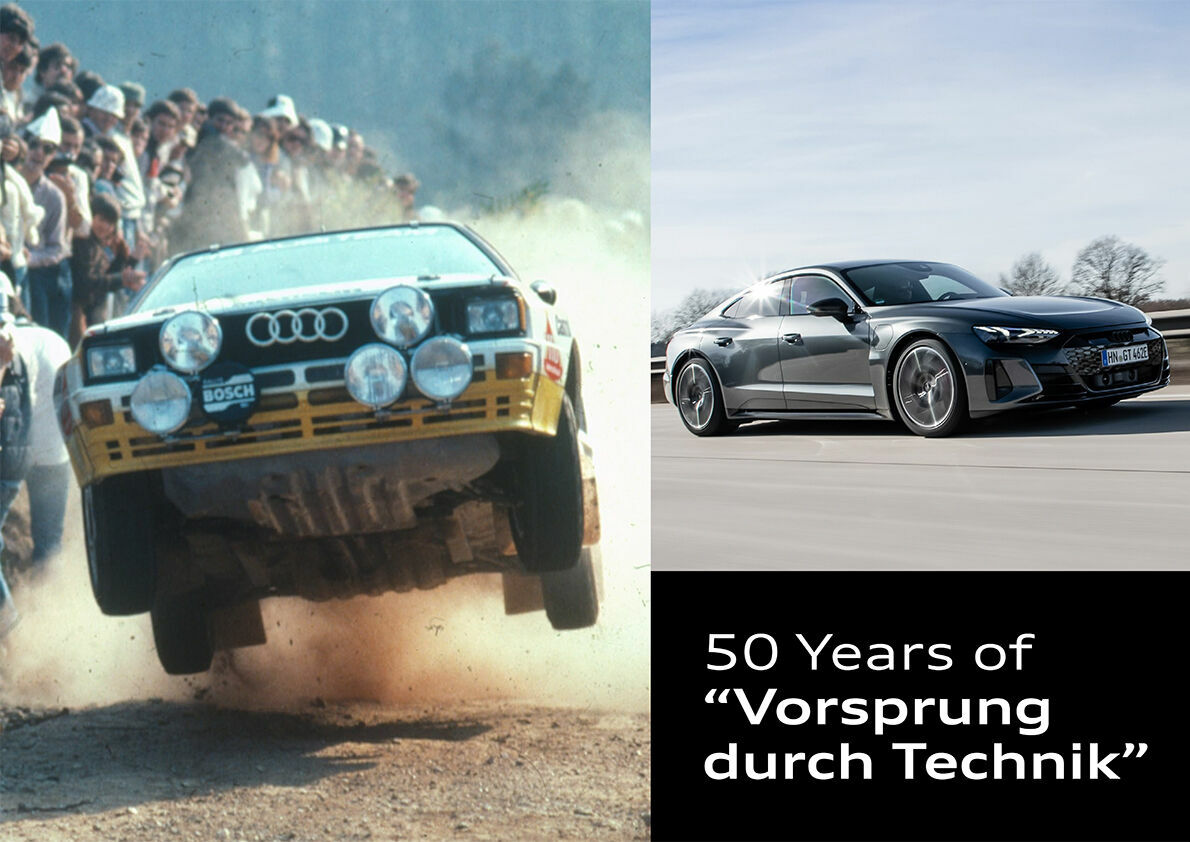
Advancement is in Audi’s DNA – a look at the milestones of the past five decades demonstrates this clearly Member of the Board of Management for Technical Development Oliver Hoffmann: “Our aim has always been to drive change” Member of the Board of Management for Sales Hildegard Wortmann: “We are redefining advancement and focusing on sustainability, digitalization and electrification”
The Audi slogan “Vorsprung durch Technik” is marking its 50 year anniversary this year. Even half a century after its inception, the world-famous slogan of the Four Rings hasn’t lost any of its appeal. And each year, there’s a little bit more history behind it. On this momentous occasion, the company is looking back at a plethora of innovations over five decades that demonstrate why “Vorsprung durch Technik” isn’t just a slogan for Audi – it’s also an expression of the company’s future-oriented approach.
The birth of the slogan 1969 saw the merger of Auto Union GmbH, headquartered in Ingolstadt, and Neckarsulmer NSU Motorenwerke to form Audi NSU Auto Union AG at the Neckarsulm location. The new company’s range of models spanned from the air-cooled engines of the rear-wheel drive NSU Prinz series and the water-cooled four-cylinder engines of the front-wheel drive Audi 60 and Audi 100 to the rotary engine of the futuristic-looking NSU Ro 80. The idea to communicate this technological diversity as a competitive advantage came in 1970 from Hans Bauer. The employee in the Audi NSI advertising department devised the slogan that people around the world would come to recognize: “Vorsprung durch Technik.” The new slogan made its first appearance in a large-sized ad in January of 1971. Soon, customers also saw it in Audi NSU brochures. Audi 100, Audi 100 Coupé S, Audi 80 or Audi 50 – they all now represented “Vorsprung durch Technik.” The slogan was adapted over the years in many ways, including “Audi. A nice bit of technology.” or “Audi.